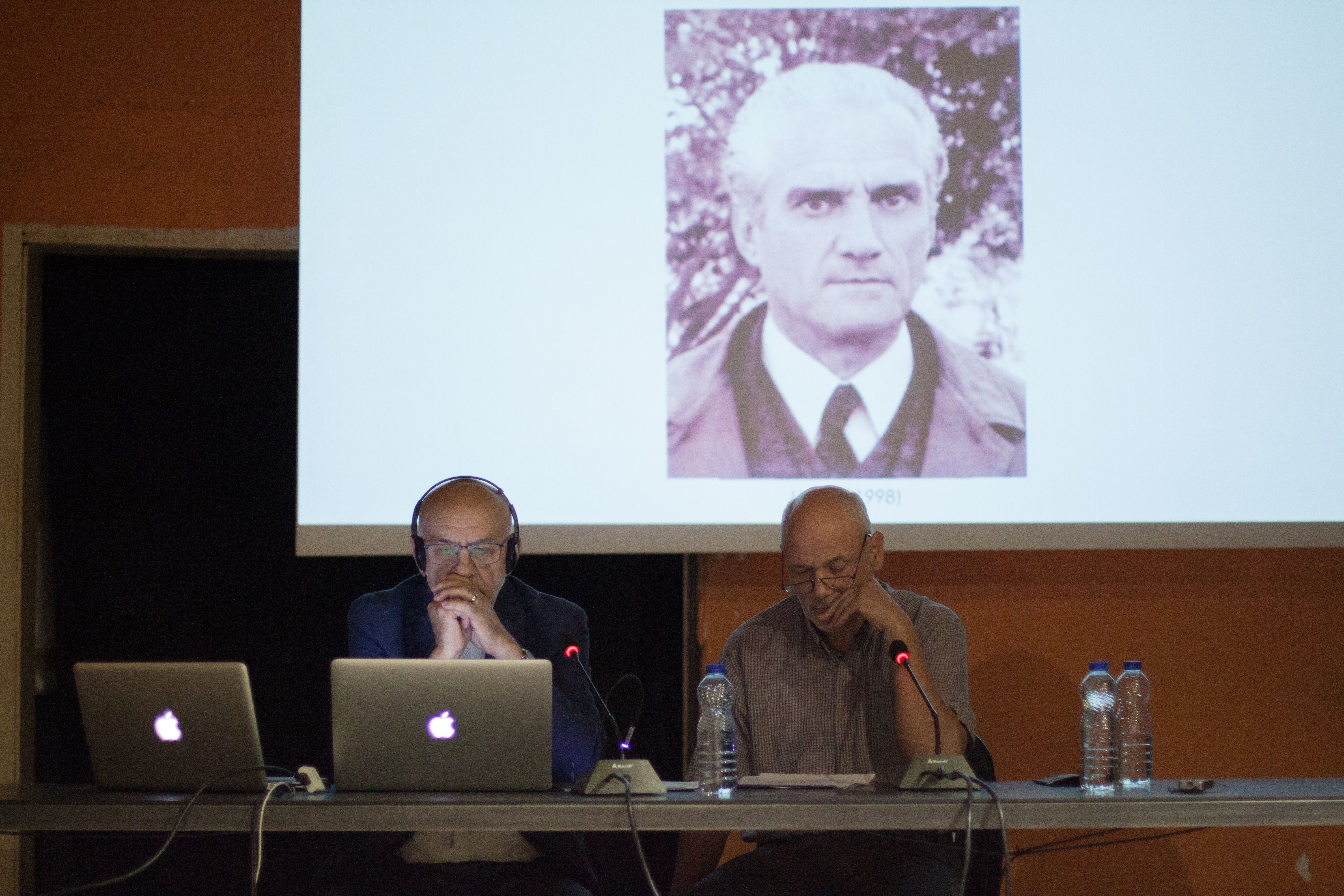
Edi Hila and Zef Paci at Summer School as School 2019
16 August, 2019, 19:00
Venue: Boxing Club
Summer School as School
5 - 21 August, 2019
Stacion - Center Contemporary Art Prishtina has the pleasure to announce "Month of young women"by Edi Hila and Zef Paci, part of the Public Program of Summer School as School 2019.
Franc Ashiku (1925-1998) has been one of a few artists in Albania who have worked in the genre of graphic design and posters during the period of Communism.
Franc Ashiku (1925-1998) has been one of a few artists in Albania who have worked in the genre of graphic design and posters during the period of Communism.
Franc Ashiku belongs to the generation of the remarkable Albanian intellectuals who contributed to their country, respectively for the times they lived in, when the current situation was nothing but emergency. His principles of contribution were idealism and devotion in order to make this country as decent as anywhere else in the world. Unfortunately it happened that he lived in hard times, during the communist dictatorship, which, more than in any other area of life, harshly struck the art by placing great obstacles to the liberty of creativity and, furthermore, persecuted artists. Posters at that time were totally politically perceived and, in most cases, based upon the conceptual and formal structure according to the Soviet model. Franc Ashiku very carefully managed to change
the path by approaching non-conformist creative visions, thus offering compositional rhythm and form, beyond the current pattern of the time, providing synthetic interpretation of the topic or posters. His creative activity had a direct impact on other events held those days like exhibitions, the textile industry or the celebration exhibitions where country’s economic strength and achievements were displayed and whose exposure was made by improvised elements, which were also the cultural indicators in the design field of that time. On these occasions he interfered with the exhibition environs by providing greater effect to the public eye of that time by using his fine taste, the abstract scale, symbolic items, contemporary graphics exceeding the boundaries of that time, and admitting modern interior design.
The paintings of Franc Ashiku are a product of works by preceding painters such as Idromero Marubi, Kolombi and Rrota. Moreover he was affected by the atmosphere emitting Shkodra figuration, city architecture, traditional costumes, music, celebrations, and the way of life in this city. Also, the others artists of that time et al also affected him, the ones who created a western–like atmosphere through their discussions.
Born in Shkodër, Albania, 13 October 1944. Lives and works in Tirana, Albania. As an important figure of the Balkan arts scene, the work of Edi Hila has for the last 20 years bared witness to the profound changes experienced by societies in post communist Europe. Having refused to emigrate to a more economically prosperous country, Hila remains living in Tirana where he has developed a practice which reflects on the transitory nature of Albanian history (its geography between east and west) and on the position of Albanian painting in Mediterranean art history. He has taken part in numerous international exhibitions including the Venice Biennale (1999), "After the Wall" at the Moderna Museet in Stockholm (1999), the Hamburger Bahnhof in Berlin and the Ludvig Museum in Budapest (2000) as well as "Blood and Honey - The Future 39;s Balkan" curated by Harald Szeeman at the Essl Museum in Vienna (2003) and the Liverpool Biennale (2010). His works have recently been acquired by the collections of the Musée art Moderne Centre Pompidou, FRAC Pays de la Loire and the Fonds Municipal of the Ville de Paris.
Art House School mentor ZEF PACI graduated in Painting at the High Institute of Arts in Tirana. He holds a doctoral degree from the Center of Albanological Studies in the Institute of Anthropological and Art Studies with a research about the Marubi photography.
From 1999, he is professor of History of Art and Painting at the Faculty of Visual Arts, University of Arts in Tirana. In addition to his didactic activity, as artist, he has participated in various exhibitions, has made several scenographies for theater (2008, 2009, 2016) as well as some frescoes for churches (2005-2007).
Author of many research articles in scientific journals, Paci has an active participation in workshops and conferences. In 2009, 2010, 2011 and 2012, he has been coordinator and curator of the Ardhje Award organized by T. I. C. A.
In 2008, 2011, 2013, 2015 and 2017, he has been curator of the exhibion “Idromeno”, a national award for young artists organized by the Civic Gallery of Shkoder. Paci has curated a number of personal and group exhibitions of the photographers Marubi, Kolë Idromeno, Shan Pici, Dedë Jakova, Pjetër Rraboshta, Angjelin Nenshati in the Gallery of Arts in Prishina (2014) Marubi, the moving lens of an archive (co-curated with Lucjan Bedeni), permanent exhibition of the Marubi National Museum of Photography, Shkodër (2016) at GR Art Gallery, Stamford CT (2017) Marubi, life in images at La Triennale di Milano (2018), Marubi, Il Rituale Fotografico. He has curated exhibitions of well known Albanian artists (Edi Hila, Franc Ashiku, Lek Tasi) and international ones (What happened to the general?”).
He is a researcher and author of a series of editions about art and photography: “Marubi, photography as a ritual” (2012); MARUBI: The moving lens of an archive”, edition of the National Gallery of Arts in Kosovo (2014); The History of Europian Photography 1939-1969 II, 2014, The History of Europian Photography 1970-2000 III, 2016 (Albanian Photography ), (Central Europian House of Photography); “Dhoma e dritshme” R. Barthes (translation of “Camera Lucida”)©Muzeu Kombëtar i Fotografisë Marubi, ISBN – 984U391U5934U819